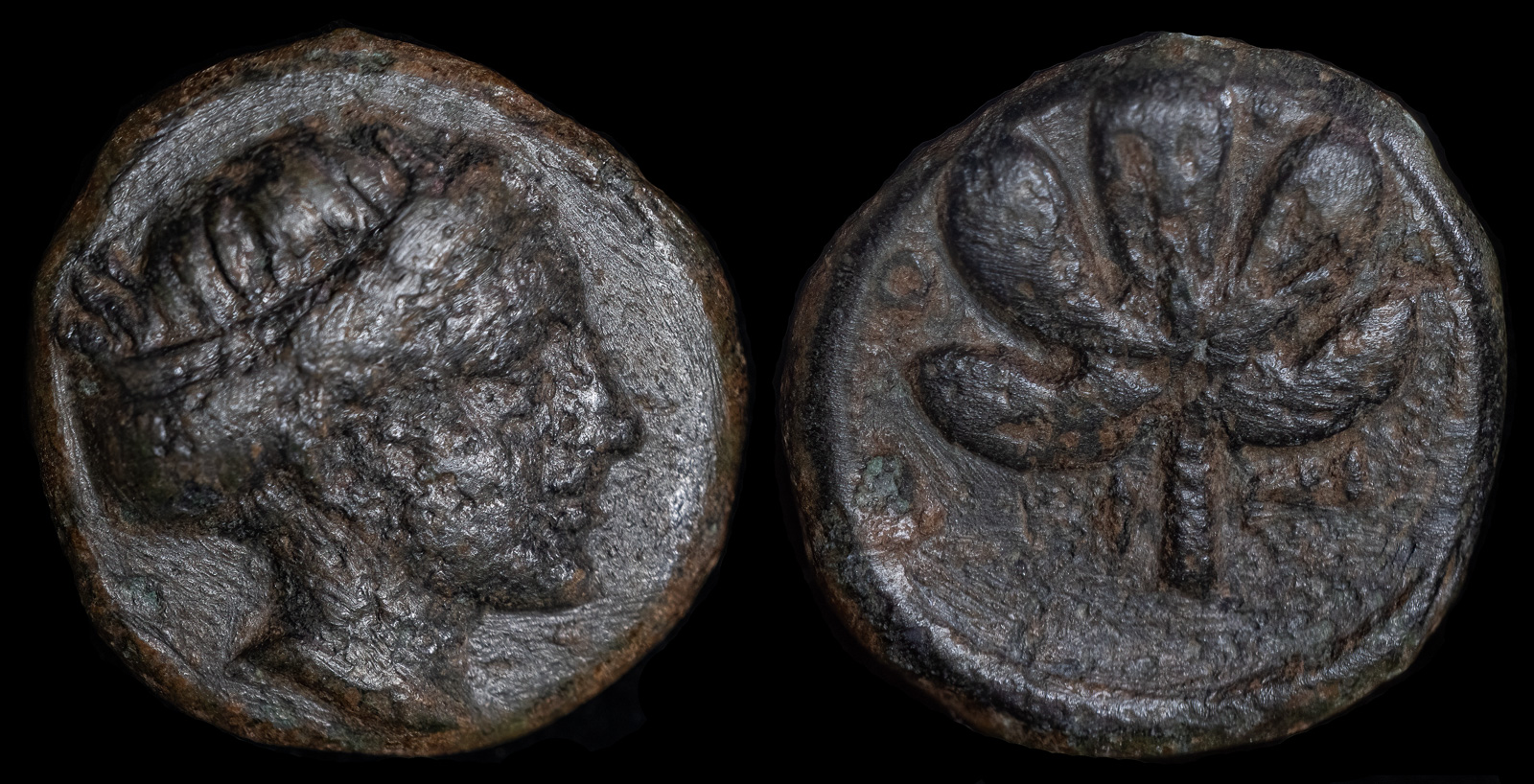Leaf
View All Tags
One of the most common leaves depicted on Greek coins was the olive leaf, often associated with the goddess Athena. In Athens, the olive tree symbolized wisdom, peace, and prosperity, reflecting Athena’s gifts to humanity. The olive leaf on coins emphasized the city’s reliance on olive oil production, a cornerstone of its economy, and its cultural heritage linked to Athena. Coins featuring olive leaves often served to reinforce the city’s connection to the goddess, projecting its identity and prosperity.
The laurel leaf, connected to Apollo, was another prevalent motif on ancient coins. The laurel symbolized victory, purification, and divine favor, as it was central to rituals and honors, such as the laurel wreaths given to victors in the Pythian Games at Delphi. Coins featuring laurel leaves often celebrated triumphs or invoked Apollo’s blessings, aligning the issuing authority with ideals of success and divine sanction.
The grapevine leaf, particularly associated with Dionysus, symbolized fertility, abundance, and revelry. Cities known for viticulture, such as Naxos, often featured vine leaves on their coinage to highlight their agricultural wealth and their connection to Dionysian cults. The vine leaf also reflected the role of wine in Greek social and religious life, serving as a reminder of communal celebrations and spiritual offerings.
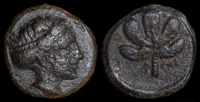
Idyma, Caria 350-300 BCE

Iolkos, Thessaly mid 4th cent BCE
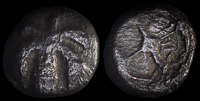
Kamiros, Caria 400-300 BCE
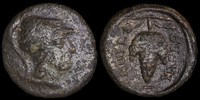
Lokris Opuntii 351-338 BCE
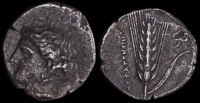
Lucania, Metapontion 400-340 BCE
